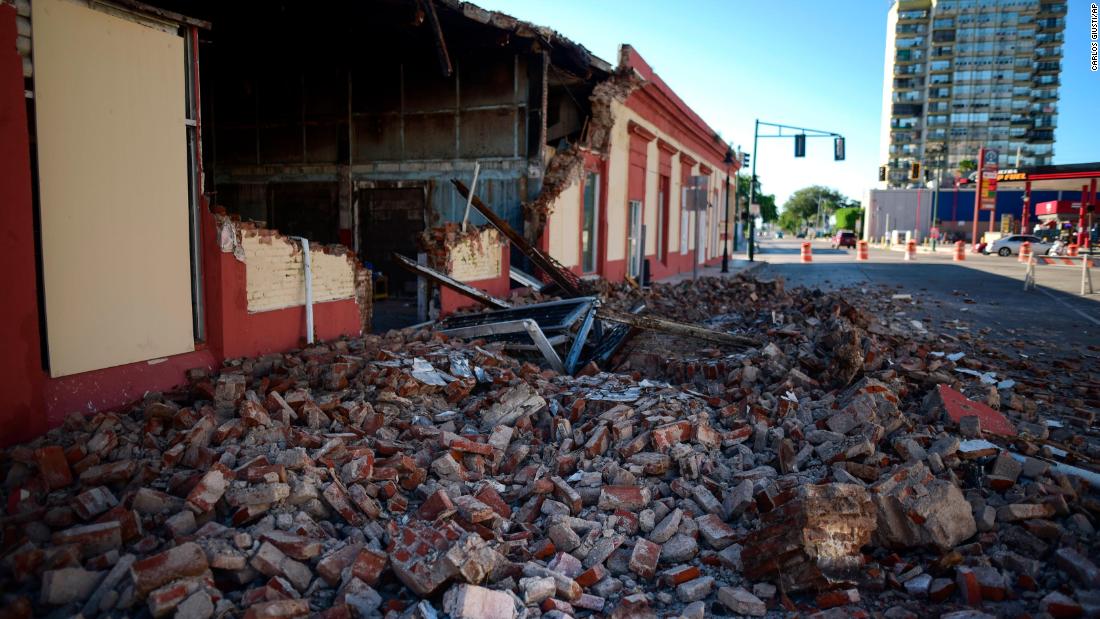[ad_1]
The back-to-back natural disasters — earthquakes and hurricanes — that have hit the Caribbean island of my birth in just over two years have left many residents there anxious, sad, stressed out, confused, irritated, and exhausted. And also, asking questions. They are wondering if man-made events are the reason why the earth is literally coming apart under their feet, threatening the very ground they walk on.
“It’s crazy,” a friend texts me in the middle of the night from her home near San Juan. “It’s like we’ve entered some kind of porthole, loop, an alternative reality, an aberration of reality … so many crazy things going on and increasing in intensity. I’m concerned fracking is the result. We are being dismissed as crazy.”
The island residents I’m in touch with are particularly questioning if rigs they have photographed and observed near areas where new gas and petroleum was found a few miles off fault lines — Lajas Valley, Montalva Point, and the Guayanilla Canyon — could be causing unusual seismic events. The quakes are happening a few miles off the southern coast as the North American plate and the Caribbean Plate squeeze Puerto Rico. Literally.
Geologists and social media journalists have used their networks to calm the public and dismiss the connection. People in Puerto Rico are asking questions because they don’t buy the answers they’ve been given by geologists and others. They’ve coined a new word for those who refuse to stop questioning, conspira-noicos, two Spanish words that form a combination of conspiracy and paranoid.
One of the many things that Puerto Ricans do best is invent new language, often humorous, when words in the dictionary fail them. Conspira-noicos is also a word that captures the spirit of what’s happening on the ground.
Who can blame islanders for being conspira-noicos? The seismic events this week that caused one death, power outages all over the island, and destruction of homes, schools, churches, and the sacred indigenous landmark, the rock formation Punta Ventana on the coast of Guayanilla, happened as the island is still recovering from category five Hurricane Maria and its aftermath.
The government failed the people and the island miserably after the hurricane. And it’s failing them now.
There is a collective stress and trauma that is part of the national DNA not just caused by Hurricane Maria but the subsequent government collapse that left the island without power for almost a year, and caused more than 4,345 deaths according to one estimate from Harvard’s school of public health. The residual strain of Puerto Rico’s long-dire financial straits.
How much can Puerto Rico take before it collapses into the ocean amid so much pressure?
The southern region of Puerto Rico, where the devastation has been particularly intense, is dubbed “the sacrifice zone” or la zona sacrificada. During Spanish colonial times in the 17th century, it’s where the bulk of the sugar plantations — worked by African and Native slaves and poor peasants — were housed. Today these old plantations are sites of power, petrochemical and carbon burning plants. Their descendants live in the area. The region has also been a dumping group for toxic coal ash. The regions service the rich and powerful northern cities where more tourists and wealthier families live. Where power resides. Think of southern Puerto Rico as the Mississippi of the American South or even, Appalachia.
A few hours after the last quake, I spoke to Ruth Santiago, 60, a mother of two who was born in the Bronx and is longtime resident of Salinas, in southern Puerto Rico.
“The earth has moved so much here that sometimes I am not sure if the land is moving or not,” she said.
This seismic activity is what petrifies Santiago, an environmental justice lawyer, most of all. She has been working with communities on the ground that want to stop the construction of land and marine gas pipelines and ports. After Hurricane Maria and community pressure, families and groups advocating for cleaner, sustainable energy won a respite. The Puerto Rico government adopted a pledge to move the island to 100% renewable energy by 2050.
Santiago spoke to a deep vulnerability and instability a number of Puerto Ricans have been sharing with me. Given the ubiquity of the quakes, the potential risks they pose to pipelines and the flammable nature of the gas, the fear of an accident casts a long shadow over the lives of many people who have already been forced to struggle with crisis and destruction on other fronts.
Whether we’re talking about seismic disaster or energy policy, what is at stake when governments don’t have the interests of the people is huge. She pleaded with me: please tell the world, other Puerto Ricans, and Americans, too much is at stake.
Language continues to be expanded by Puerto Ricans and Puerto Ricans will continue to create new words to describe just how much is at stake in the era of climate emergency when words in the dictionary are not enough.
This article has been updated to reflect the 5.9-magnitude earthquake that hit Puerto Rico on Saturday.
[ad_2]
Source link


